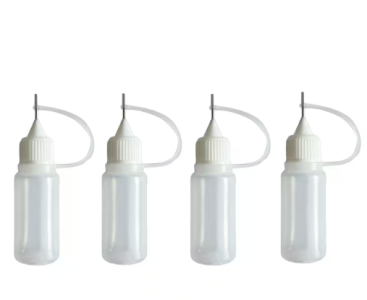Mike, there is no one-glue-fits-all panacea. Different adhesives have different properties and uses, although a small selection will get you started.
If you were limited to only one, however, I guess PVA would probably be the best choice. I use Titebond II for a general adhesive. Original Titebond is not PVA, nor is Titebond III. TB II has the longest open time (time you have to position and clamp the parts) and being a true PVA can usually be softened with heat and water in case you need to remove a part.
CyanoAcrylate (CA) also has its uses. I use primarily medium and thin viscosity. The thin will penetrate a joint and is what I used when I built the assembly jig for my Oseberg. The parts were all interlocking and tight-fitting, and the jig was nearly fully assembled before I applied any glue. I just put a couple of drops on the joint and it penetrated right in. However, the jig is for temporary use and I wouldn't use thin for general assembly - I have seen it fail. The medium viscosity is good for small, non-structural parts, but again, I wouldn't trust it for major assemblies. There is a reason that furniture manufacturers (and I work for one) use PVA for 99% of the assembly needs. The advantage of CA is its fast setting quality. I have often made use of it in combination with PVA to serve as a "clamp". Spread PVA over most of the mating part, but leave a few bare spots where you put a drop of CA. Press the part in place until the CA cures and it will hold the part in place until the PVA dries.
Stay completely away from polyurethanes like Original Gorilla. Despite the (false) advertising that it will hold anything, it only really works well with perfectly fitting joints and tight clamping. PU glues expand as they cure and will fill any gaps in your joint with a soft, brittle, frothy foam. Gorilla does make a PVA wood glue, however.
Epoxy is exceptionally strong, but is messy and a pain to mix up. It has its uses though, especially in laminating thin pieces, because it won't cause the wood to swell and warp like a high-moisture PVA will. It is also the only one that is gap-filling and that will reliably hold a poorly fitting joint.
That brings me to my final point - regardless of the adhesive you choose, make sure that the joints are tight and well fitting. IF not, use a small sliver of wood or veneer to fill the gap, or use epoxy. No other glue will reliably hold a poorly fitting joint. Additionally, plan your clamping strategy well in advance and try your clamps before applying glue. Whether it is just masking tape, rubber bands, spring clamps, bar clamps or cans of dog food - have them ready and make sure they will work before you uncork the glue.
Hope this helps.
Hope this helps.








